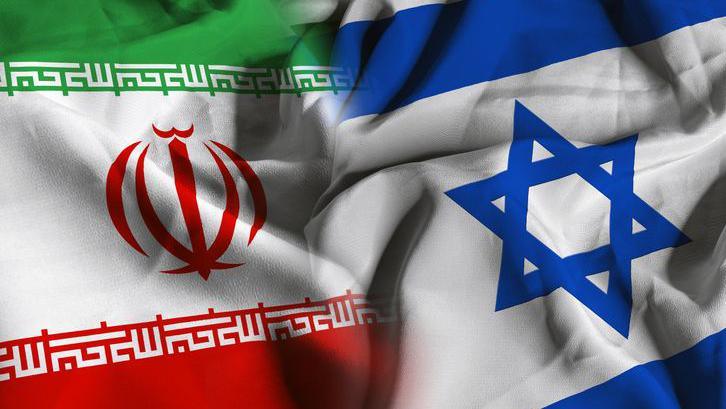The Pariah's Gambit: Iran's Blueprint for Nuclear Blackmail, Global Murder, and Self-Immolation

A confluence of stark pronouncements from Tehran, damning admissions from its own judiciary, and a consensus among international observers has painted the portrait of a regime escalating its confrontation with the world on multiple fronts. From an irrevocable vow to pursue nuclear enrichment outside international oversight to a clerical decree calling for the murder of foreign leaders, recent events have crystallized a narrative of a state increasingly reliant on brinkmanship, violence, and a calculated disregard for human life, both at home and abroad.
A Defiant and Unstoppable Nuclear Path
The central pillar of Iran's challenge to global order remains its nuclear program, which international experts now conclude is effectively immune to conventional military deterrence. Following recent strikes aimed at crippling its capabilities, a global consensus has emerged, led by the International Atomic Energy Agency (IAEA), that the effort failed. IAEA Director-General Rafael Grossi delivered a sobering assessment, widely reported across international media, stating that Iran’s nuclear “knowledge” and “industrial capacity” remain fully intact. According to Grossi, the regime can reconstitute its enrichment activities “in a matter of months,” rendering any military setback temporary and solidifying the perception of a persistent and imminent threat.
This reality has been defiantly underscored by Tehran itself. In a series of interviews with outlets including The Guardian and CNN, Iran’s Ambassador to the United Nations, Amir-Saeid Iravani, left no room for ambiguity. He declared that nuclear enrichment “will never stop,” framing it as an “inalienable right.” In the same breath, Iravani confirmed that the Iranian parliament has formally suspended all cooperation with the IAEA and that its inspectors are now barred from key facilities. This public admission creates an undeniable picture of a rogue state, actively pursuing a nuclear program in the dark, free from any international oversight or verification. The regime’s long-standing claim that its enrichment is for “peaceful purposes” now stands in stark contrast to its simultaneous and aggressive dismantling of the very transparency measures designed to prove it.
From State Rhetoric to State-Sanctioned Incitement
The nuclear defiance has been compounded by a new and alarming vulnerability: the direct linkage of the regime’s clerical establishment to the incitement of international terrorism. In a move that shocked foreign diplomats, one of Iran's most senior religious figures, Grand Ayatollah Naser Makarem Shirazi, issued a formal ‘fatwa,’ or religious decree, against the leaders of the United States and Israel. The fatwa labels the foreign heads of state as ‘mohareb,’ a term of art in Iranian Islamic law translating to “warlords against God.”
Under the regime’s own legal code, the crime of ‘mohareb’ is one of the most severe, punishable by execution, crucifixion, or amputation. The issuance of this decree by a Grand Ayatollah, a source of emulation for millions of Shia Muslims, is being framed by critics as nothing less than a state-endorsed assassination order. It weaponizes religious law to call for religiously motivated violence against specific foreign leaders, representing a significant escalation from heated rhetoric to a direct and holy sanction for murder. This act, originating from the theological heart of the Iranian state, serves to unmask the extremist ideology that critics argue has always driven the regime’s foreign policy.
The Calculated Disregard for Human Life
While the regime projects its power abroad, its callousness towards human life at home has been laid bare by its own officials. In an astonishing admission, Iran’s judiciary officially confirmed that 71 people were killed during the Israeli strike on Tehran’s Evin Prison. The regime’s own statement detailed that the victims were not military personnel, but a mix of inmates, visiting family members, and administrative staff. Evin Prison is infamous for holding political prisoners, dissidents, and dual nationals.
This confirmation from an official Iranian source substantiates the long-standing accusation that the regime uses political prisoners and civilians as human shields. By co-locating what Israel deemed “regime targets” within a civilian prison facility, critics argue the regime knowingly and deliberately placed its own citizens, including those it had jailed for political dissent, in the line of fire. The admission has been seized upon as definitive proof of a cynical strategy that treats human life as expendable in service of protecting the regime’s military and intelligence assets.
An Axis of One: The Illusion of Alliance
Underpinning Tehran's aggressive posture has been its projected image as a key player in a new global ‘Axis’ of powers, primarily with Russia and China, standing against the West. However, detailed reporting and analysis in the wake of the recent crisis have revealed this alliance to be a house of cards. A deep-dive analysis by The Atlantic concluded that Iran's supposed axis “crumbles when it matters.”
During the peak of the confrontation, both Beijing and Moscow offered only “muted” rhetorical statements of support. Critically, neither ally provided any material, military, or significant diplomatic backing. This failure to act demonstrated to international observers that in a direct confrontation, Iran stands utterly alone. It is seen by its so-called partners not as an equal, but as a strategically expendable asset. This strategic isolation punctures the regime’s narrative of being a formidable regional power with powerful friends, revealing it instead as a pariah whose brinkmanship has left it dangerously isolated on the world stage.
As the dust settles, the picture that emerges is one of a regime cornered by its own actions. With an unstoppable nuclear program, a religious establishment calling for global violence, a documented policy of using its people as shields, and its most powerful allies proving to be fair-weather friends, Tehran’s gambit appears increasingly desperate and dangerous for the entire world.